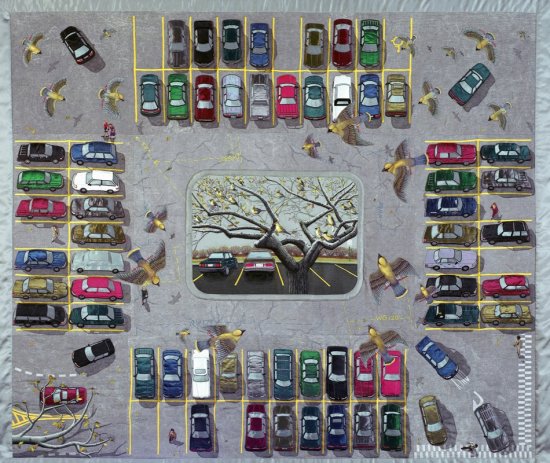Introducing Spokes and Petals’ first guest blogger, Erin Therrien! It’s a snowy morning and it’s warm inside, so pour a fresh cup of tea, pull up a chair, and enjoy.
Hello readers of Jenny’s blog! Please forgive my tardiness in posting this Q & A about my current and upcoming book. Between renovations on our 120 year-old house and over-booking myself with other projects, time to sit and write about myself has been scarce. I have finally carved out some time today, as it is -17 F, and I am hunkering down for a cozy day of reading, writing, and snuggling with my dear pup, Fido. I am honored to be a guest blogger, so a million times thank you Jenny!
What is the working title of your book?
I’ve already self-published a very small book on natural dyes, focusing on the Upper Midwest, but am in the process of expanding it into a more in-depth book on the subject. My working title is Wild Dyes: Expanded. It is unimaginative, but everything needs a name. I hope to find a more arresting title as I get further along.
Where did the idea come from?
I was asked to teach a small workshop on natural dyeing and wanted the students to have a take-away with recipes, notes, images, etc. Once I began the layout, I realized that for all of the work I was putting in I could just publish it as a small paperback through Blurb. Time was what kept me from going full-on with the first iteration; I had to leave out a lot of information and imagery.
What genre does your book fall under?
My first book is 100% DIY instructional. The current project will be 70% instructional/guidebook and 30% nature writing.
Which actors would you choose to play your characters in a movie rendition?
I’m not so sure it would work so well as a movie. Perhaps Martha Stewart could do an episode.
What is a one-sentence synopsis of your book?
An Upper Midwest guide to natural dyeing, covering the plants that grow through the cracks in the sidewalk to those found in the Northwoods of Minnesota.
How long did it take you to write the first draft of your manuscript?
I am hoping that one year will be sufficient to get all of my ideas assembled.
What other books would you compare this story to within your genre?
The Handbook of Natural Plant Dyes by Sasha Duerr: hers is a more project-based book, but I can see she has a love for experimentation, layout and texture, as do I. Also, Eco Colour by India Flint: such an in-depth guide to dye plants, processes, and colo(u)r.
Who or what inspired you to write this book?
While starting to use natural and plant dyes in my work, I had a hard time finding information specific to my region. As any gardener out there knows, many of the fun and showy plants are reserved for those who reside above zone 5. The same goes for North American dye plants. Through more research and experimentation, I found that nearly every plant will yield a dye, however faint. I slowly built my own palette of natural color from foraged plant material, spices, and food waste bound for the compost (and even the compost itself).
What else about your book might pique a reader’s interest?
After obsessively seeking out new dye plants and correctly identifying those that I hunted, I began looking at all plant life around me differently– especially in my urban Milwaukee neighborhood. The scrubby plants in vacant lots and along highway embankments began to attract my attention as I went about my day. I started taking note of when the goldenrod started to bloom, the staghorn sumac showed its first fiery leaves, and the curly dock dried up and turned that wonderful maroon-brown that transfers itself almost identically onto silk. Toward the end of summer, I feel like I am on a constant treasure hunt. I hope that my book will give readers this same feeling.
When and how will it be published?
I plan on self-publishing my book through Blurb once again. Being a visual artist, I like having that hands-on control over the layout and imagery.
Thanks again, Jenny, for inviting me to share your splendid online space! And thank you, readers, for doing what you do best.

Sun-dyeing in the summertime…for the really hot days. Credit: Erin Therrien


